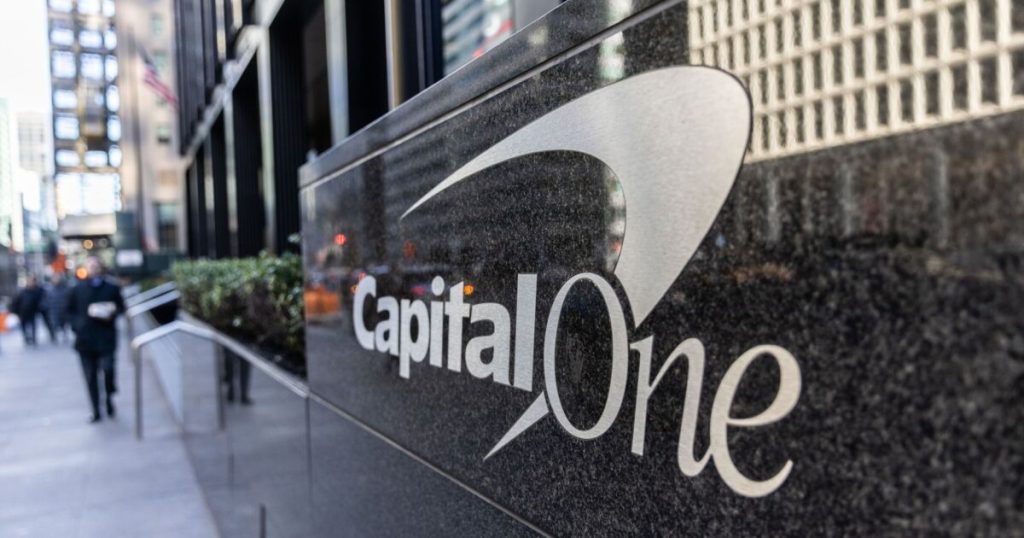- Key insight: Capital One’s third-quarter financial beat consensus analyst estimates across its bottom line and credit metrics.
- Supporting data: The company’s net charge-off rate decreased, and credit card purchase volume rose 39% from the prior year.
- What’s at stake: The bank is currently working on integrating its recent acquisition of Discover Financial Services, the largest U.S. U.S. bank deal in 15 years.
This is a breaking-news story. It will be updated.
Capital One Financial beat analysts’ expectations in its third quarter and emphasized confidence in its credit quality, even as it racked up nearly $1 billion of expenses related to
The McLean, Virginia-based bank said Tuesday that it logged net income of $3.2 billion, or $4.83 per diluted common share, topping the consensus analyst estimate of $4.36.
“In the third quarter, our adjusted earnings, top-line growth, credit results, and capital generation continued to be strong,” said Chairman and CEO Rich Fairbank in a prepared statement. “The Discover integration continues to go well and we are well positioned to capitalize on the opportunities that lie in front of us.”
Capital One’s investors have been mostly bullish on the company’s opportunities as it digests Discover. The bank’s stock is up some 28% since it
Still, Erika Najarian, an analyst at UBS Securities, wrote in a note earlier this month that investors had been tapping the brakes on Capital One’s stock recently due to delayed clarity on share repurchase and capital targets, the company’s plan for “accelerated investment spend” and general concern about consumers’ resilience.
The $662 billion-asset bank’s latest earnings report could help alleviate investors’ concerns about consumers’ resilience and Capital One’s capital plans.
The company released $760 million of allowance for losses in the third quarter due to “recent favorable credit performance.” Its net charge-off rate, at 3.16%, was lower than analysts expected and down 11 basis points from the prior year.
Purchase volume in its credit card business was up 39% from the prior year.
Capital One also said Tuesday that its board recently approved a plan to repurchase up to $16 billion of shares, following the buyback of 4.6 million common shares for $1 billion during the third quarter.
The company also plans to increase its dividend to 80 cents per share, beginning in the fourth quarter, a 33% increase.
Costs related to the Discover integration, including intangible amortization expenses and loans and deposit fair value market amortization, increased from $639 million in the prior quarter to $951 million.
But the company didn’t take additional major allowances for books of Discover loans, like the $8.8 billion it had built for non-purchased credit deteriorated loans in the second quarter.
Last quarter, the company reported a $4.3 billion net loss due to the expenses associated with the acquisition. Fairbank said at the time that the costs of the integration would exceed the company’s original $2.8 billion guidance, but also that the process was “off to a great start.”
The company closed its acquisition of Discover in the spring after a 15-month process.
Fairbank has been resolute about the importance of
“We are on the cusp of even greater opportunities down the road,” he told analysts during the company’s second-quarter earnings call. “These opportunities come both from this deal and also from Capital One’s transformation to be at the frontier of a rapidly changing marketplace. These opportunities are exciting, but they will require significant investment to bring them home.”
The deal had originally been valued at $35 billion, but Capital One said in the second quarter, and reiterated Tuesday, that the fair value price of the purchase when it closed in May was actually $51.8 billion.

